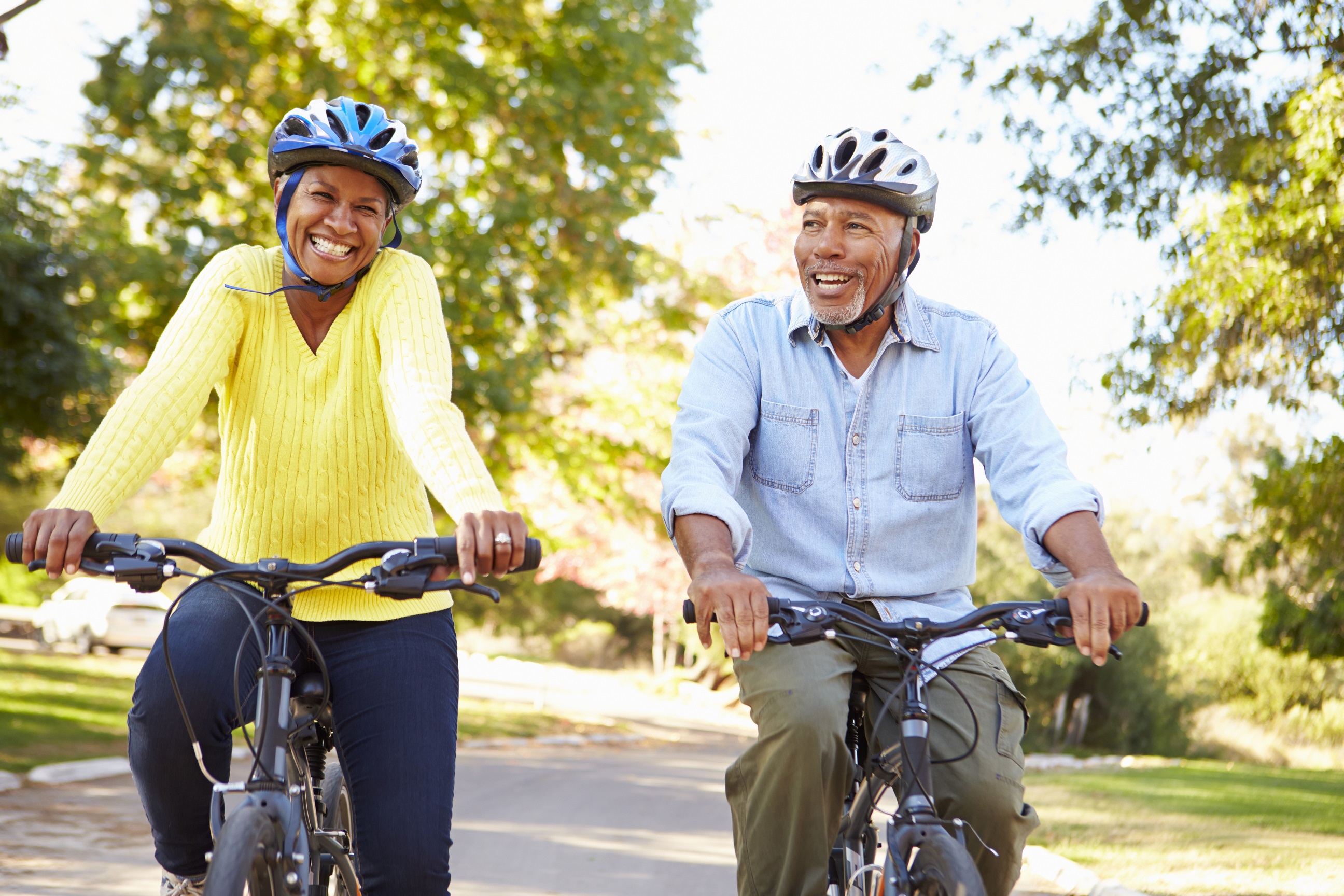8 Healthy Habits That May Prevent Cancer
7 min read

You may be more in control of your cancer risks than you think. You can’t change some factors, such as age or family history, but you can make lifestyle changes that could prevent cancer. It’s always a good time to take steps to prevent cancer. If all Americans followed these eight healthy habits, cancer deaths in the United States could be cut almost in half.
1. Avoid Tobacco Products
Physicians have known for more than a century that smoking cigarettes, cigars, or pipes can lead to lung cancer. In fact, roughly one-fifth of all cancers in the United States are caused by smoking.
Even casual smokers are at higher risk. Smokers who average fewer than a cigarette a day are nine times more likely to die of lung cancer than people who have never smoked.
In addition to lung cancer, smoking is linked to other cancers, including:
- Bladder
- Cervical
- Colon and rectal, also called colorectal
- Kidney
- Liver
- Stomach
- Throat
Chewing tobacco, dissolvable tobacco, and snuff also raise your risk of cancer in your esophagus, mouth, pancreas, and tongue. More research needs to be done to learn about the connection between cancer and using e-cigarettes or vaping, but these alternatives have cancer-causing chemicals, too.
Secondhand smoke is smoke you breathe when people are smoking near you. For both smokers and secondhand smokers, the more you breathe in tobacco smoke, the higher your risk.
Thirdhand smoke happens when a person comes in contact with tobacco smoke residue on surfaces or in the air. A recent study suggests that thirdhand smoke has the potential to cause cancer.
For smokers, the cancer risk begins to drop about five years after quitting.
2. Stay Physically Active
People who get regular exercise and avoid spending too much time sitting or lying down during the day have a lower risk of cancer than those who live a sedentary lifestyle.
 To help you stay healthy, get at least 150 minutes of moderate-intensity aerobic exercise per week. You should be able to talk during moderate exercise but not sing. Moderate-intensity activities include:
To help you stay healthy, get at least 150 minutes of moderate-intensity aerobic exercise per week. You should be able to talk during moderate exercise but not sing. Moderate-intensity activities include:
- Biking on flat trails
- Dancing
- Gardening
- Walking briskly
A physically active lifestyle can help you maintain or reach a healthy weight. Being overweight or having obesity increases your risk of developing at least 13 different cancers:
- Adenocarcinoma in the esophagus
- Breast cancer, especially after menopause
- Colorectal
- Gallbladder
- Kidney
- Liver
- Meningioma, a brain cancer
- Multiple myeloma, a blood cancer
- Ovarian
- Pancreatic
- Stomach
- Thyroid
- Uterine
If you are overweight or obese, losing weight may help lower your cancer risk. Maintaining a healthy weight may also reduce your chance of cancer returning if you’ve already had cancer.
3. Watch What You Eat and Drink
A healthy diet can help you maintain a healthy weight – and it can also impact your cancer risk in other ways.
Diabetes, insulin resistance, and a diet with many high-glycemic index foods have been linked to increased risk of many types of cancer. Eating red meats and processed meats can raise your chances of developing colon or rectal cancers.
Drinking alcohol may also increase the risk of developing cancers, including:
- Breast
- Colorectal
- Esophageal
- Mouth
To help prevent cancer:
- Avoid soda and other high-sugar foods and drinks.
- Choose whole-grain foods.
- Drink no more than one alcoholic drink a day if you are a woman and no more than two a day if you are a man.
- Eat vegetables and some fruit daily.
- Get some of your protein from plant-based sources, such as beans.
- Limit red meats and processed meats.
4. Cover Up in the Sun
 Ultraviolet (UV) rays from the sun, sunlamps, or tanning beds cause most skin cancers. In the summer, we pick up sunscreen to protect ourselves, but preventing skin cancer should be a year-round effort.
Ultraviolet (UV) rays from the sun, sunlamps, or tanning beds cause most skin cancers. In the summer, we pick up sunscreen to protect ourselves, but preventing skin cancer should be a year-round effort.
There are many things you can do to help lower your risk of skin cancer all year long:
- Don’t use sunlamps and tanning beds.
- Choose a spot in the shade and avoid being out from 10 a.m. and 4 p.m. when UV rays are strongest.
- Cover your arms with long sleeves and your legs with long pants or a long skirt.
- Use a broad-spectrum sunscreen with an SPF of 30 or higher.
- Use sunglasses that block out 99% to 100% of UVA and UVB rays.
- Wear a hat with a wide brim to protect your ears, face, head, and neck.
5. Get Vaccinated
The human papillomavirus, or HPV, causes most cases of cervical cancer. It may also increase the risk of mouth, penile, rectal, throat, or vaginal cancer. HPV is a common sexually transmitted infection that most people will be exposed to during their lifetime. However, the HPV vaccine can significantly lower the risk of developing cervical and other cancers.
The vaccine is most effective before someone is exposed to HPV. Because of this, it’s recommended for all people ages 11 through 26. If you are 27 or older, talk with your provider about whether the HPV vaccine could still help you.
Another type of virus called hepatitis B is a leading cause of liver cancer. The hepatitis B vaccine is recommended for people of all ages.
6. Check Yourself
In most cases, cancer discovered early is easier to treat. Regular self-exams can help detect cancer before it has a chance to spread.
Self-exams for breast, mouth, skin, and testicular cancers are easy to do and may help save your life.
During a self-exam, look for:
- Changes in the color or texture of the skin
- New bumps, lumps, or spots
- Open areas that won’t heal
- Unusual rashes
7. Schedule Cancer Screenings
Screenings help your doctor detect signs of cancer before symptoms start. These kinds of tests look for signs of several types of cancer. Some of the most beneficial screenings are for breast, cervical, and colorectal cancer.
Breast cancer screening includes mammograms that should be an option as early as age 40 and given annually, starting at age 45, according to the American Cancer Society. Screening may also include a breast exam done by a provider or additional imaging tests, like an MRI. Women in their 40s or younger with a high risk of breast cancer should talk with their provider about individualized screening recommendations.
Cervical cancer screening involves getting an HPV test that looks for the HPV virus and a Pap test that checks for pre-cancerous cells. Pap tests should begin at age 21 and be repeated regularly, generally, every three to five years, based on your age and test results.
Colorectal cancer screening typically starts at age 45 for men and women. Colon cancer often begins as a colon polyp, which is a small clump of cells inside your large intestine. Screening tests look for polyps and other signs of colon or rectal cancer. How often tests are repeated depends on the previous screening results, the type of screening done, and your personal risk factors.
There are multiple colorectal screening options available, including:
- Stool sample tests
- Flexible sigmoidoscopy, a short, thin tube with a light and camera inserted into the rectum and lower colon
- Colonoscopy, a test that uses a longer tube to view the whole colon
Lung cancer screenings are recommended for people between 50 and 80 who are smokers or have quit smoking in the past 15 years. A lung cancer screening uses a low-dose computed tomography or CT scan. During this test, your provider will create images of your lungs using low-dose X-rays.
8. Talk with Your Provider About Your Risks
Many types of cancer have a genetic link or may be connected to exposure to certain chemicals or illnesses. If you have a family history of cancer, talk with your provider to see if genetic testing may be helpful for you.
Cancer preventing medications may be available to lower your risk of developing cancer, depending on your age, risk factors, and the type of cancer your provider is concerned about.
Talk with your provider to learn more about your personal risk factors and other ways to help prevent cancer.
If you have recently been diagnosed with cancer, the Rocky Mountain Cancer Centers team will work with you to make sure you have the treatment plan that’s right for you. Request a second opinion from one of our cancer experts.